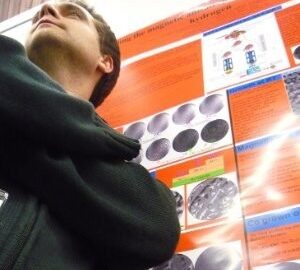
Moisés Zarzoza has joined the ApNano group and will pursue a PhD at the University of Castilla-La Mancha (UCLM). He earned his MSc at the Center for Research and Advanced Studies of the National Polytechnic Institute in Mexico City, Mexico. His research will focus on the study of magnetic nanostructures, from their synthesis to novel applications. Welcome to Spain, Moisés!









